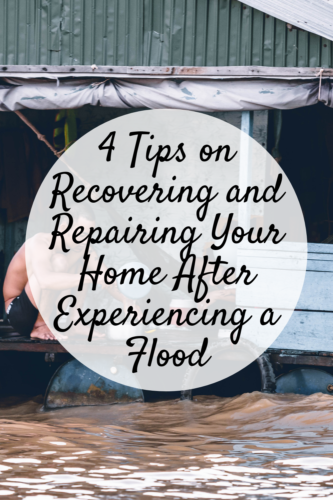
It’s a common misconception that a homeowner should just throw out everything after experiencing a flood. While it is essential to clean up as much as possible, often with the assistance of a Water Damage Restoration company, there are many steps you can take to prevent further damage from water and sewage. In this article, we will discuss four ways to recover and repair your home. We hope our tips help you get back on track!
1. Check all electrical connections
Floodwater can cause severe damage to your house’s electrical system, which might include short-circuiting, fire, or even injury if not handled properly. The best thing you can do is turn off the main power switch in your home after getting out of harm’s way. Then inspect all cables for any signs of corrosion or rusting before turning them back on again. Some devices may require professional help, like washers, dryers, and fridges with electronic controls connected to electricity. To protect these types of equipment from further damage, it is recommended that they be disconnected as soon as possible by a licensed electrician who will then check how much insulation has been damaged before reconnecting them back.
2. Test all electronics
Even if the power is turned off, all devices that have been directly exposed to flood water or sewerage should be tested by a professional. This is because they can carry a live current which means any device connected to them could still become damaged and pose an additional risk of fire even after being disconnected from the main electricity supply. Common household appliances such as microwaves and ovens might not need testing since they generally don’t contain moving parts. Still, it’s best to check with your local electrician before using them again, just in case!
3. Have water damage repaired
Water damage can be pretty insidious as it is not always visible. However, suppose you do have signs of flooding or water leakage after the major crisis has passed. In that case, this is where your insurance policy kicks in because most policies will cover expenses to any Water Damage Restoration damaged by floodwaters! Homeowners need to note what was covered, so they remain informed throughout the entire process and don’t hesitate when asked if they want an item repaired or replaced with one closest matching its purchase price.
4. Get in touch with your insurance company
After a flood, homeowners should contact their insurance company as soon as possible to inform them of the damage and start filing an official claim. This is where your documents come in handy because you will have to provide details such as purchase date, cost, model number, etc. You can also ask for items that fell under “additional living expenses,” which may include temporary housing or food if any of those were needed after being displaced from your home due to flooding. Your insurance company might not cover every expense, so it’s best to check with them beforehand about what they do and don’t pay for before making any unnecessary purchases!
The tips mentioned above are the most important things to keep in mind when recovering from a flood. By taking care of your house correctly, you can prevent further damage and enjoy living there again without worrying about hazardous situations that might occur due to water infiltration or short-circuiting equipment!





Leave a Reply